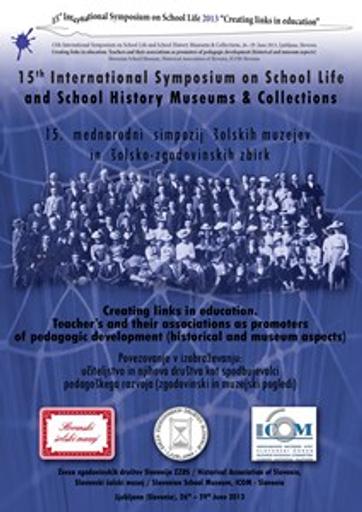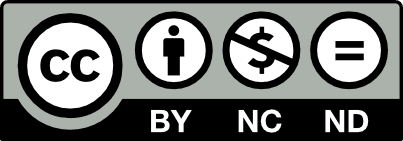/
Dogodki
/
Konference
History of Education as reflected in Estonian Museums

Avtor(ji):Lea Leppik
Soavtor(ji):Branko Šuštar (mod.)
Leto:2013
Založnik(i):Slovenski šolski muzej, Ljubljana, Zveza zgodovinskih društev Slovenije, Ljubljana, ICOM Slovenija, Celje, Inštitut za novejšo zgodovino, Ljubljana
Jezik(i):angleščina
Vrst(e) gradiva:video
Avtorske pravice:

To delo avtorja Lea Leppik je ponujeno pod Creative Commons Priznanje avtorstva-Nekomercialno-Brez predelav 4.0 Mednarodna
Datoteke (1)
Opis
The history of the higher education in Estonia begins in the year 1632, when the Swedish king Gustav II
Adolf established the university in Tartu (Dorpat). Higher education was given in Latin, German or Swedish, as
in Estonian territory the upper class minority spoke different language from the lower class majority. The
history of popular education is connected to reformation. At the end of the 17th century we can for the first time
speak about system of rural schools for native people on Estonian territory. In 1807 the first newspaper for rural
people was printed and in 1893 the first daily newspaper in Estonian appeared. At that time Estonians were
nearly 100% literate.The success-story of education belongs to Estonian national narrative. How is it reflected in our
museums? We have one special museum dedicated to higher education (University of Tartu History Museum)
and one museum, dedicated specially to the 19-th century rural school. The last one is inspired from a very
popular book about school-life, written by a very popular writer (Oskar Luts, “Kevade”). In other museums
there is everywhere something, connected to education, but the picture is not at all systematic. The most popular
periods in exhibitions are the old classroom (like in 19th century) or the soviet time. In last case the point is
usually the pioneers and other ideological stuff. There is nearby nothing about very important period in history
of education in Estonia –the period between two world wars. The museum expositions like to speak about very
old rural schools, almost neglected is the school in city, catholic period, and professional education. As different
powers have established different schools, we speak only about these schools, which are living now. In
presentation I will illustrate the picture, which we give in Estonian museums about history of education in
Estonia.
Metapodatki (12)
- identifikatorhttps://hdl.handle.net/11686/37644
- naslov
- History of Education as reflected in Estonian Museums
- Haridusajaloo kajastamine Eesti muuseumides
- avtor
- Lea Leppik
- soavtor
- Branko Šuštar (mod.)
- predmet
- zgodovina
- šolstvo
- muzej
- history
- school system
- museum
- opis
- The history of the higher education in Estonia begins in the year 1632, when the Swedish king Gustav II Adolf established the university in Tartu (Dorpat). Higher education was given in Latin, German or Swedish, as in Estonian territory the upper class minority spoke different language from the lower class majority. The history of popular education is connected to reformation. At the end of the 17th century we can for the first time speak about system of rural schools for native people on Estonian territory. In 1807 the first newspaper for rural people was printed and in 1893 the first daily newspaper in Estonian appeared. At that time Estonians were nearly 100% literate.The success-story of education belongs to Estonian national narrative. How is it reflected in our museums? We have one special museum dedicated to higher education (University of Tartu History Museum) and one museum, dedicated specially to the 19-th century rural school. The last one is inspired from a very popular book about school-life, written by a very popular writer (Oskar Luts, “Kevade”). In other museums there is everywhere something, connected to education, but the picture is not at all systematic. The most popular periods in exhibitions are the old classroom (like in 19th century) or the soviet time. In last case the point is usually the pioneers and other ideological stuff. There is nearby nothing about very important period in history of education in Estonia –the period between two world wars. The museum expositions like to speak about very old rural schools, almost neglected is the school in city, catholic period, and professional education. As different powers have established different schools, we speak only about these schools, which are living now. In presentation I will illustrate the picture, which we give in Estonian museums about history of education in Estonia.
- Kõrghariduse ajalugu Eestis algab 1632. aastaga, mil Rootsi kuningas Gustav II Adolf asutas Tartu ülikooli. Ülikooliharidust anti ladina, saksa ja rootsi keeles, sest väikesearvuline ülemkiht rääkis neid keeli. Laiema rahvahariduse tekkimine on seotud reformatsiooniga. Eesti alal tekkis kohalikele põliselanikele mõeldud talurahvakoolide süsteem 17. sajandi lõpus. 1807 hakkas ilmuma esimene talurahvale mõeldud ajaleht ja 1893 esimene päevaleht. Selleks ajaks oli eestlaste lugemisoskus peaaegu 100%. Hariduse edulugu kuulub kindlalt eestlaste rahvuslikku narratiivi. Kuidas kajastub see meie muuseumides? Eestis on üks kõrghariduse ajaloole pühendatud museum – see on Tartu Ülikooli ajaloo museum. Meil on üks väike muuuseum, mis keskendub 19. sajandi kihelkonnakoolile (Palamuse). Viimane on inspireeritud väga populaarsest raamatust, Oskar Lutsu “Kevadest”. Teistes Eesti muuseumides on kõikjal hariduse teema küll enamasti esindatud, kuid pilt, mis avaneb, on kaugel süsteemsusest. Kõige populaarsemad on 19. sajandi maakooli stilis vana klassituba ja seejärel nõukogude aeg, kus esikohal seisab pioneerivorm ja muu ideoloogiline atribuutika. Peaaegu üheski muuseumis ei kajastu kuidagi selline väga oluline periood eesti haridusajaloos nagu kahe maailmasõja vaheline aeg, mil viidi sisse kohustuslik emakeelne 6-klassiline haridus. Peaaegu unustatud on katoliiklik periood, linnakoolid, kutseharidus. Muuseumid näitavad ennekõike seda, mis ulatub mingil viisil tänapäeva, minnes mööda nähtustest, millel otseseid järeltulijaid pole. Ettekandes püüan piltidedega illustreerida kuvandit, mille me oma muuseumides Eesti hariduselust läbi aegade anname.
- založnik
- Slovenski šolski muzej
- Zveza zgodovinskih društev Slovenije
- ICOM Slovenija
- Inštitut za novejšo zgodovino
- datum
- 2013
- 26. 06. 2013
- tip
- video
- jezik
- Angleščina
- jeDelOd
- pravice
- licenca: ccByNcNd
